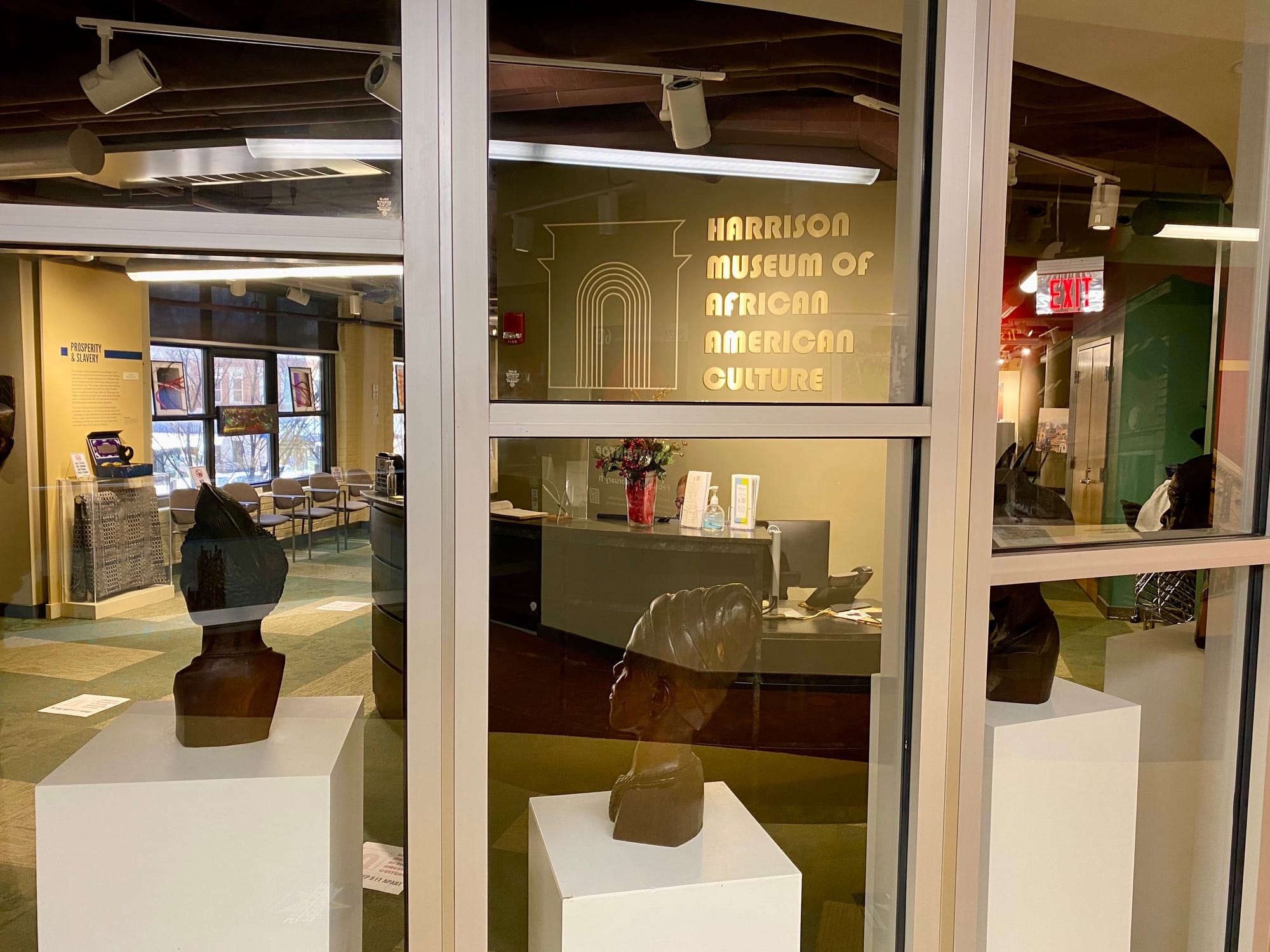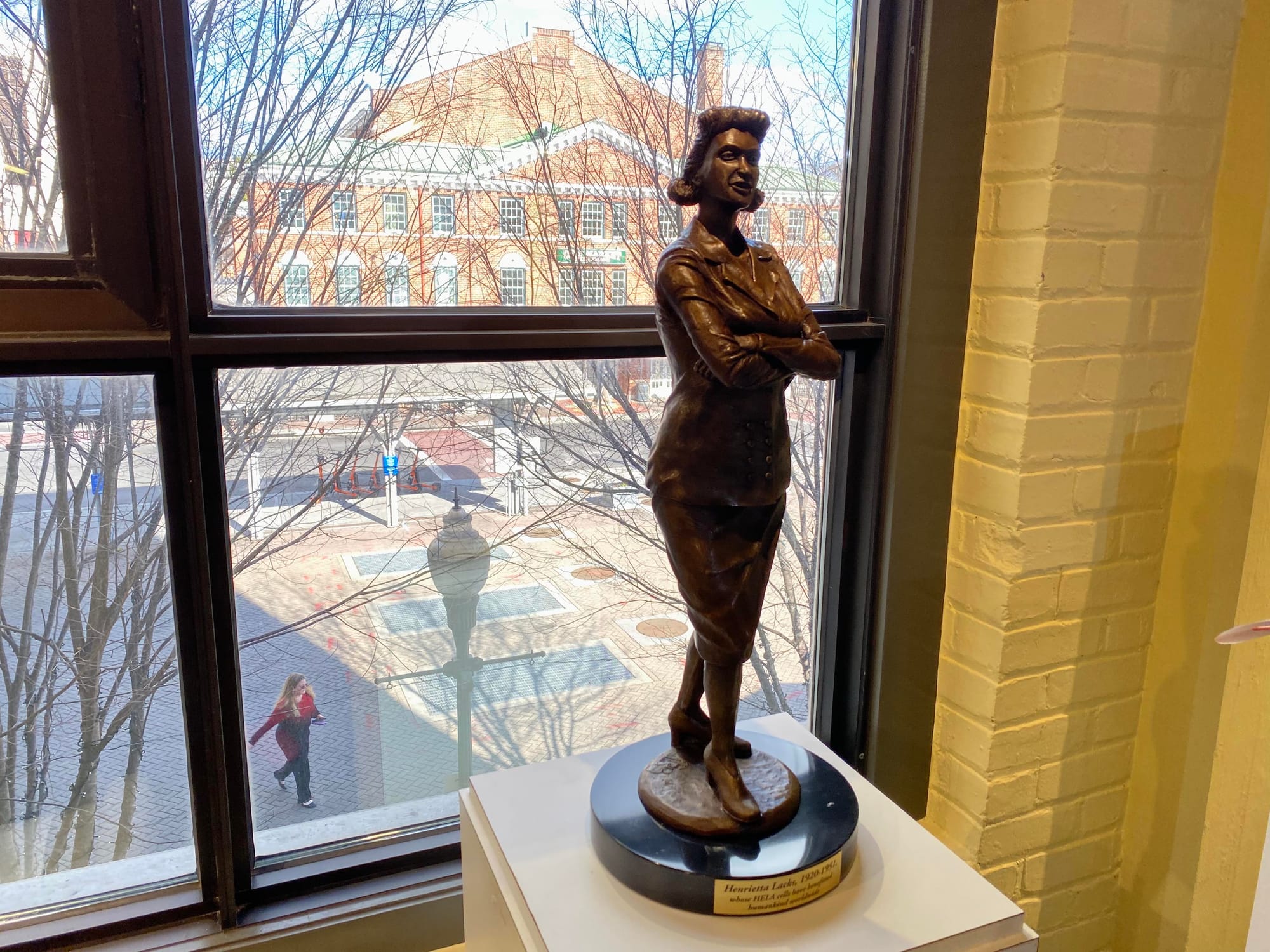Roanoke's Black History Museum Plans To Leave Downtown for Melrose Plaza
Center in the Square was not planning on renewing the Harrison museum’s same lease, which is up in 2026.

Roanoke’s Black history museum plans to leave its downtown home at Center in the Square for the burgeoning Melrose Plaza in Northwest.
The Harrison Museum of African American Culture intends to move as early as next year, according to E.B. Smith, a consultant for the museum, to the community hub created by Goodwill Industries of the Valleys from its former campus.
After operating for decades in the former Harrison Elementary School in Northwest Roanoke, the museum opened in a newly renovated Center in the Square in 2013.
Center in the Square was not planning on renewing the museum’s same lease, which is up in May 2026, according to Tara Marciniak, the center’s president and general manager.
“We did offer different space, perhaps less space, more commensurate with the quantity of foot traffic we felt they were bringing in, but we weren't going to give the exact same lease to them,” Marciniak said.
A few years ago, museum leaders mentioned they wished they had stronger attendance numbers at the center, according to Marciniak. She said the organizations discussed multiple options, including a different space inside the building or an outside building owned by the center. With about 8,000 square feet, the museum has been seeing fewer than 100 general ticket sales on average in recent months, she said.
“Ultimately, it was just determined that Center in the Square might not be the most suitable location for their needs,” Marciniak said.
Charles Price, the board president of the museum, as well as Goodwill, declined to comment, referring questions to Smith.
“At the moment, it looks promising that we’ll be able to shift our operations back to the Northwest and be further embedded in the community,” Smith said.
He said Goodwill approached museum leaders in February about the possibility of joining the plaza, where community members last month celebrated the opening of a grocery store. A health clinic, cafe, bank and adult high school are also planned to open in the coming years.
Smith characterized the move as a return to the museum’s roots, which date back to 1985.
“We’d be located in Northwest, so we’d be accessible to one of our fundamental target demographic markets,” Smith said. “We can engage the community from within the community, as opposed to, you know, folks having to travel downtown and feeling a bit removed from the folks we represent.”

The museum’s permanent exhibition spotlights the historical contributions of Black Roanokers, with rotating shows featuring works from local Black artists. In addition to educational programming, the museum sponsors the annual Henry Street Heritage Festival and served as the fiscal sponsor for Hidden in Plain Site, a virtual history of important sites in Roanoke that also involved the creation of a bronze statue of Henrietta Lacks downtown.
Jim Sears, the former president and general manager of Center in the Square, recalled in an interview earlier this year that back in the mid-2000s, he thought the museum could benefit from more foot traffic downtown compared to its location on Harrison Avenue.
Sears said he also thought adding Harrison at the center would “reflect the community better.”
“Then again, if they don’t draw people, you’re misusing the space if you don’t draw people,” Sears said, noting that many history museums struggle with attendance. “After I retired, there was some discussion about moving the location of the Harrison Museum and swapping it out for the two interactive museums that are doing very well, the Starcade and Pinball.”
Earlier this year, those organizations referred questions to Marciniak, who said last month that the center has no set plans for what could go in the museum’s second-floor space.
Marciniak said she was aware the museum was exploring a move but hadn’t heard from the museum about its Melrose Plaza plans. The news became public at the tail end of a ribbon-cutting ceremony for the Market on Melrose, when Goodwill officials mentioned Harrison would also be joining the plaza. Renderings that flashed on screens during the event showed Harrison signage.
Marciniak noted that the Taubman Art Museum left the center for its grand postmodern building. (That departure led center leaders in 2006 to vote on bringing in the Harrison Museum to that space.)
“I think change can be a wonderful thing,” Marciniak said, “and I certainly hope that whatever they wind up deciding, you know, brings them to the goals that they're looking to achieve.”
Smith said Melrose Plaza could provide a gallery space off its main lobby and that the museum would bring a cultural perspective to “several organizations that have very compatible missions with ours.” He said many details still need to be worked out.
“Melrose Plaza not only increases our accessibility to the heart of the Black community but also aligns with our long-term vision of creating a welcoming and vibrant space for all who wish to explore and celebrate the legacies of the African diaspora,” Smith said in an email. “We are incredibly enthusiastic about this next chapter in the museum’s journey and look forward to continuing to share this exciting story with the community.”

